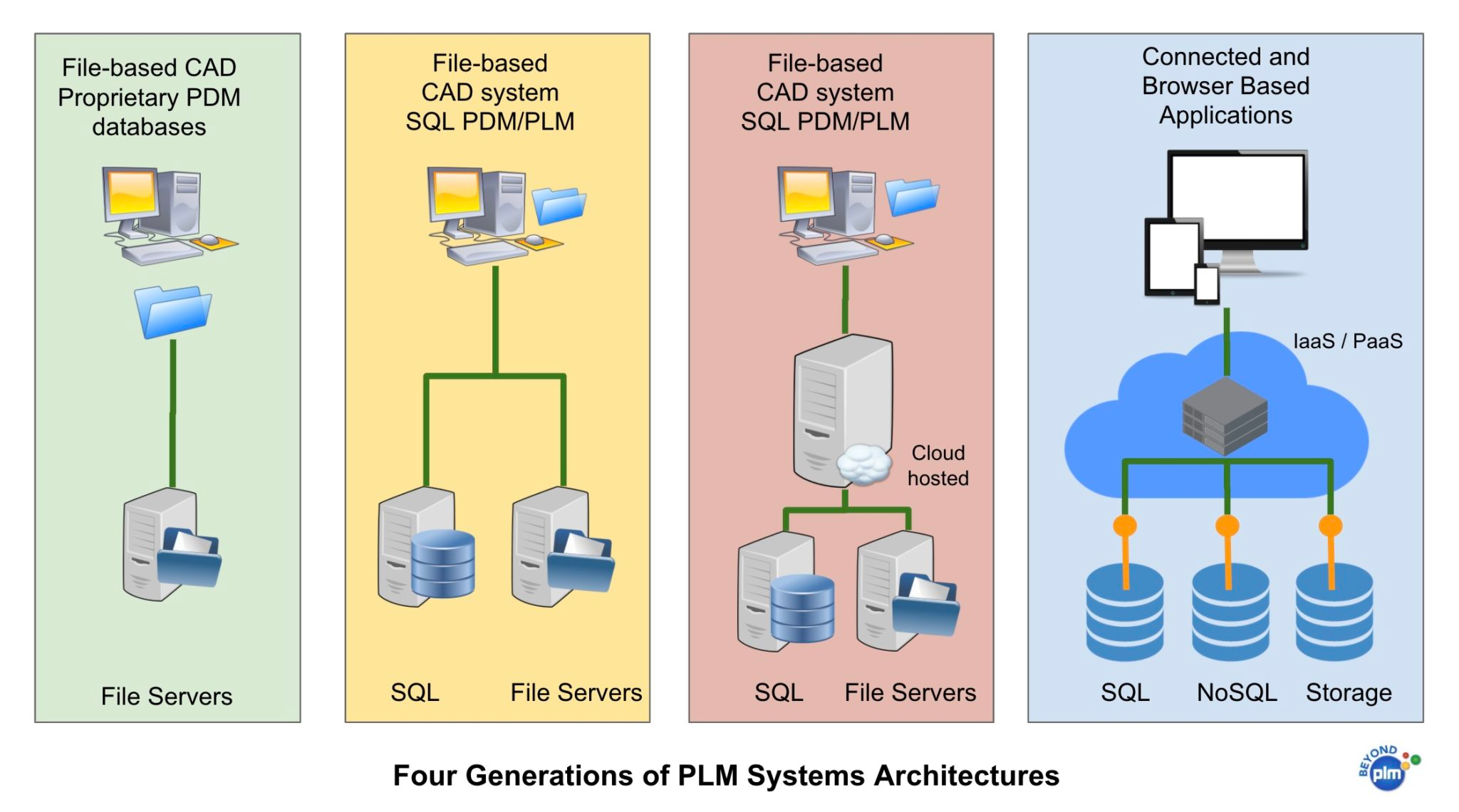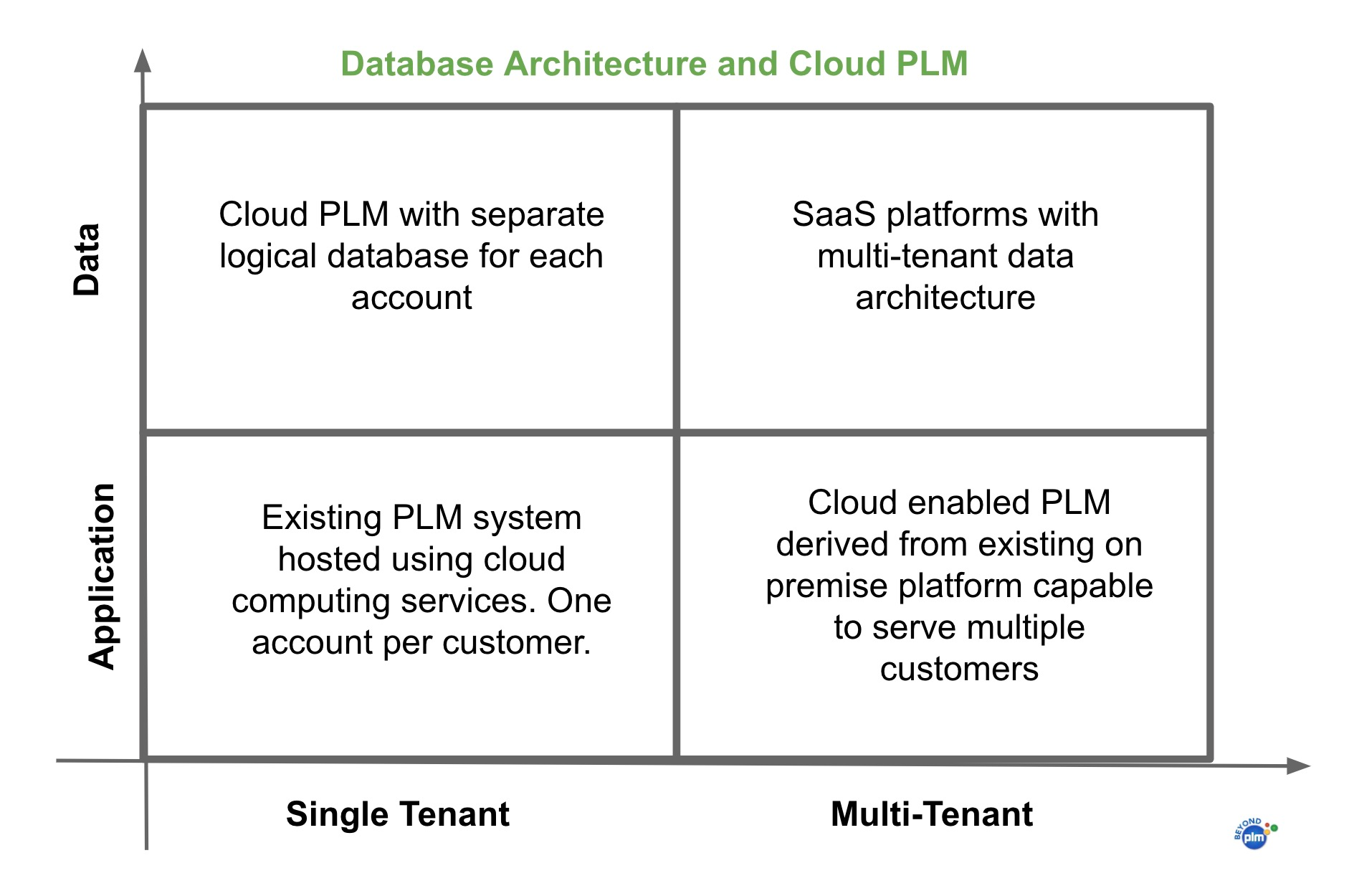
In the ever-evolving landscape of product lifecycle management (PLM), staying ahead of the curve is essential for businesses aiming to streamline their processes, collaborate effectively, and drive innovation. As we venture into 2023, one technology trend that continues to shape the PLM industry is the adoption of cloud-based solutions. I wrote many articles on Beyond PLM about the cloud during the last decade. But as the could technology evolves, it is important to check how it goes togthner with computer aided design (CAD) product lifecycle management, product data management, supply chain management, document management. Product Lifecycle Management software and PLM vendors are evolving in the way they support product development process and production process including integration with enterprise resource planning (ERP), customer relationship management (CRM). I found it useful to give the update. It should help all manufacturing companies to make the right choice in PLM technology selection in 2023.
In this blog, I’d like to explore the current state of cloud technology in 2023, dissect the key components of cloud computing, dig into how major PLM cloud platforms support cloud, and discuss the coexistence of on-premises and cloud models. Additionally, I will take a closer look at the architectures and technologies employed by major PLM players, emphasizing the importance of choosing the right cloud solution for your PLM needs.
Cloud PLM for the last 10 years
Cloud technology has come a long way since its inception. In 2023, it’s a fundamental part of how businesses operate. At its core, the cloud provides on-demand access to computing resources, including storage, processing power, and software, over the internet. This technology enables companies to scale rapidly, reduce capital expenditure, and improve collaboration by centralizing data and applications.
The usage of cloud was growing in CAD and PLM software for the last decade and the development evolved in multiple technical approaches such as hosting existing client-server systems using cloud services, hosting desktop computers with existing desktop CAD systems, development of new cloud-enabled and cloud native systems and combination of all of them together.
Everyone Does Cloud, But What Does It Mean?
Platforms
In the context of PLM, cloud platforms refer to the infrastructure and services that support the deployment and operation of PLM software. Major cloud platform providers like Amazon Web Services (AWS), Microsoft Azure, and Google Cloud offer a range of services that facilitate the hosting, scalability, and management of PLM applications. These platforms are designed to be robust, secure, and highly available, ensuring the seamless operation of PLM solutions.
In my article about Evolution of PLM architecture, I outlined the transformation of PLM software to cloud services.

Computing services are becoming elastic and scalable. But the real differentiation of CAD and PLM platform is coming from the usage of these platforms and it comes down to two very important technological elements – databases and system architecture.
Databases
Cloud databases are a vital component of PLM systems, storing and managing vast amounts of product data. Leading cloud database providers like Amazon RDS, Azure SQL Database, and Google Cloud SQL offer scalable and efficient solutions for storing PLM data. These databases are designed to handle the complex relationships and queries associated with product data, enabling efficient retrieval and analysis.
For a very long time, the database architecture of PLM system, was designed as an object-oriented extension of SQL databases. With the advanced cloud architecture and modern polyglot persistence data architecture, cloud systems can use a variation of architectures for data management. In the picture below I outlined how PLM vendors are using different database architecture in PLM software now.

System Architecture
Web architecture plays a crucial role in delivering PLM applications to users. Modern PLM systems are typically built using micro-services architecture, which allows for scalability, flexibility, and modularity. APIs (Application Programming Interfaces) enable seamless integration with other software systems, enhancing collaboration and data exchange within and beyond the organization.
The picture below gives you a general understanding of the evolution of PLM software and database architecture from both data and system architecture.

PLM software architecture was advancing on a system level (to support multiple tenants to multiple users in a shared multi-tenant system. On a database maturity side, PLM software was advancing from systems that used database per tenant to shared databases serving multiple accounts.
Major PLM Cloud Platforms and Their Implementation
Several major PLM vendors have embraced cloud technology and offer cloud-based PLM solutions. Some prominent players include Aras Corp, Dassault Systèmes’ 3DEXPERIENCE platform, Siemens Teamcenter, and PTC Windchill. All these PLM providers. Although, all these systems are slightly different from the system and data management architecture standpoint, all these systems are very similar – single-tenant database combined with cloud enabled single tenant servers.
Cloud and SaaS PLM platforms and software
There are applications and services developed natively for cloud. From a very early pioneers of SaaS PLM such as Arena Solutions to systems developed in the last 5-10 years such as PTC Onshape, OpenBOM, Propel PLM, Upchain and some others. Besides that, I have to mention cloud platforms such as Autodesk Platform Services, PTC Atlas and some others. These platforms and services are using various cloud systems and advanced databases solutions. I will talk about them in my following articles.
Can PLM Architectures Co-Exist: On-Premises and Cloud?
A very important and interesting question – can the same system be on-premise and cloud at the same time? It would be nice to have such level of flexibility, but it usually means to take some compromise between taking full advantages of cloud scale and the ability of system to be installable and operate using local servers. If you a system or provider advertising such an option, always check more details about how it is done.
Differentiate Your Cloud Tech and Architecture
As we navigate the dynamic landscape of PLM technology in 2023, it’s crucial for organizations to differentiate between the cloud technologies and architectures offered by various vendors. The choice of cloud platform, database, web architecture, and integration capabilities can significantly impact your PLM implementation’s future scalability, performance, and adaptability. Careful consideration of these factors will enable your business to harness the full potential of cloud-based PLM technology and stay ahead in a competitive market.
What is my Conclusion?
Embracing cloud PLM technology is no longer an option but a necessity for organizations seeking to optimize their product development processes. By understanding the fundamentals of cloud computing, exploring major PLM platforms, and making informed choices regarding technology and architecture, businesses can position themselves for success in the ever-evolving world of PLM. It is absolutely important for every manufacturing company to understand cloud PLM technologies, architectures and differentiate PLM software based on the understanding of their system and data architecture. Jus tmy thoughts…
Best, Oleg
Disclaimer: I’m co-founder and CEO of OpenBOM developing a digital-thread platform with cloud-native PDM & PLM capabilities to manage product data lifecycle and connect manufacturers, construction companies, and their supply chain networks. My opinion can be unintentionally biased.











